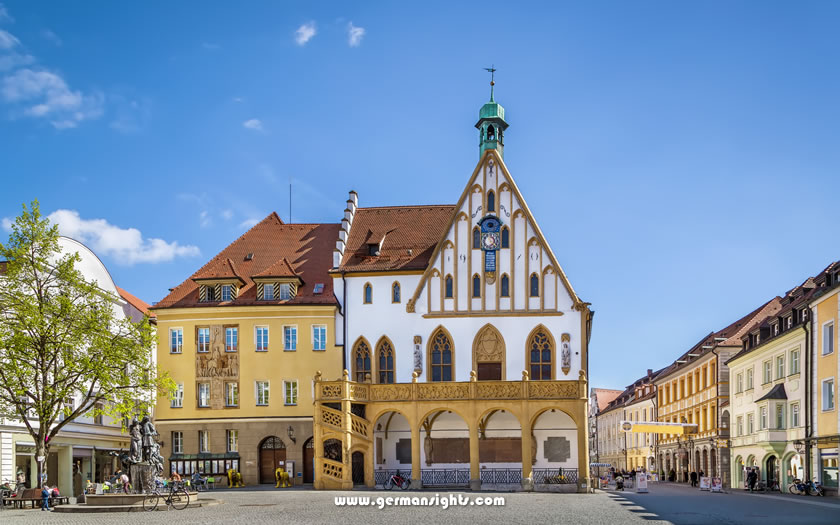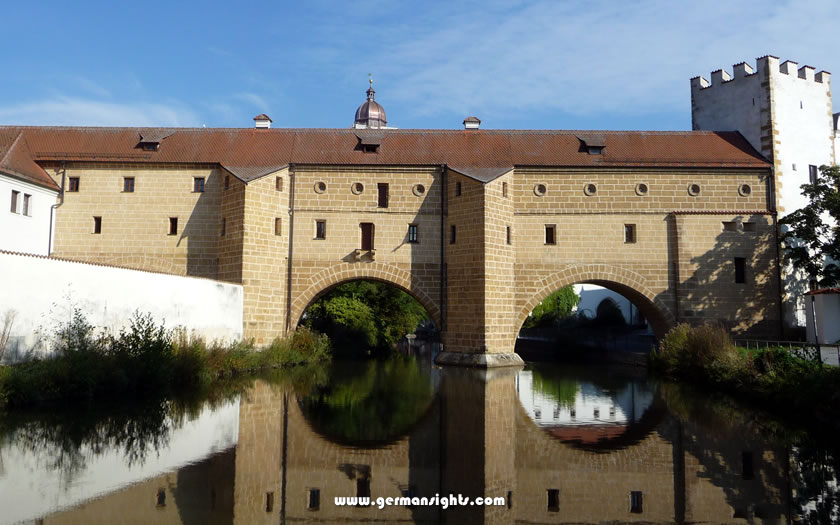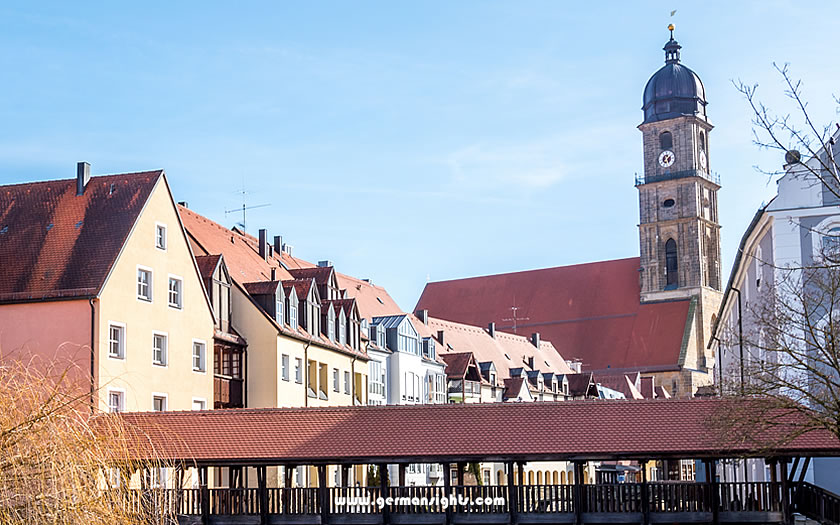Amberg is a medium-sized town in the Upper Palatinate area of Bavaria situated on the Vils river to the east of Nuremberg and to the north of Regensburg.
The former ore-mining settlement has an attractive and well-preserved old town dating from the Middle Ages which is less known and certainly underrated compared to its better-known neighbours.

The Gothic town hall in Amberg
Nuremberg Airport is the closest airport to Amberg and, if the limited number of carriers and destinations suit, then it makes sense to use this smaller airport.
Distance to Nuremberg Airport: 70km
Distance to Munich Airport: 178km
Distance to Prague Airport: 227km
Otherwise Munich offers a wide range of destinations and carriers and most visitors arriving by air would use this major airport. Prague is the next closest big airport although it involves crossing national borders and using a different currency. Further away, the massive airport at Frankfurt and the two smaller ones at Erfurt and Leipzig might also offer a solution.
The train station in Amberg is just outside the former town walls to the north-east. There are regular services to Nuremberg, Regensburg and Prague.
Amberg's old town is a compact area set between the ring road around the old town walls and the rail lines to the northeast.
In between the ring road and the former fortifications is a open space with trees and paths and there is also parkland north and south along the river Vils.
If you know when you are planning to go but haven't decided on accommodation, then use the map below to get an idea of which properties are available and to compare prices during the period you wish to travel.
Enter your proposed dates and use the '+' to zoom in on a location and reveal more properties. Click on the price above a property to see more information.
(Please note that this selection will also include some guesthouses, pensions and self-catering apartments for those who are interested in that form of accommodation!)
Alternatively, if you would like a list of properties available on your proposed dates of travel, use the search box below to find accommodation:
The centre of Amberg is a compact area surrounded by medieval town walls and with plenty of historical buildings to see as you stroll around the alleys and streets.
The local tourist office has a pocket guide (also with an English version) which details a walking tour around the town centre and the main sights along the way.
Start off near the tourist office on Marktplatz ('Market Square'). This is where the Gothic town hall (see photo above) and St Martin's Church are located. Marktplatz is also the home of a market which is held three times a week.

The 'Stadtbrille' in the city walls of Amberg
The other 'don't miss' sight is (or are!) the Stadtbrille - literally the 'town spectacles'. This is the best-known image from Amberg - the structure was part of the former fortifications and the 'spectacles' of the bridge allow the Vils river to flow beneath the building.
After all of the wandering around the town centre, it might be time to take a break at one of Amberg's many breweries. There's actually a tourist office leaflet for that as well (although only in German) which will give you an idea of where to sample a locally-produced speciality.
Settlement in the Amberg area is thought to have begun in the 8th and 9th centuries, although the first written mention of the town is from the 10th century, when it is referred to as 'Ammenberg'.
The town became a centre for mining the local iron ore deposits and a transport and trading hub down the Vils river to the Naab and from there south through Bavaria to the Danube and Passau. The iron ore was mostly transported downstream to Regensburg and the return journey loaded up with salt.

St Martin's Church in Amberg
Like other towns in Germany, Amberg suffered through the turbulence of the religious disputes of the Reformation and Counter-Reformation. Amberg managed also to have an armed dispute between the Protestant followers of Luther and those of Calvin.
Eventually the town became strongly Catholic once again and Protestants were either expelled or left for the neighbouring cities of Nuremberg and Regensburg, which retained more religious freedom for their inhabitants.
Amberg has been a garrison town since the beginning of the 18th century but the historic centre and city walls were spared major bombardment and destruction in the Second World War.
Post-war refugees and displaced persons increased the size of the town's population by a third to around 40,000, a number which has remained relatively constant up to this day.
In recent years, the historic centre has been renovated and the town is becoming a regional tourist attraction and a visitor magnet, with tourist attractions such as the remaining city walls and the baroque architecture.
The Amberg tourist office is located near the Marktplatz behind the Gothic town hall. It is open from Monday to Friday and on Saturday mornings in the summer season:
Website: tourismus.amberg.de